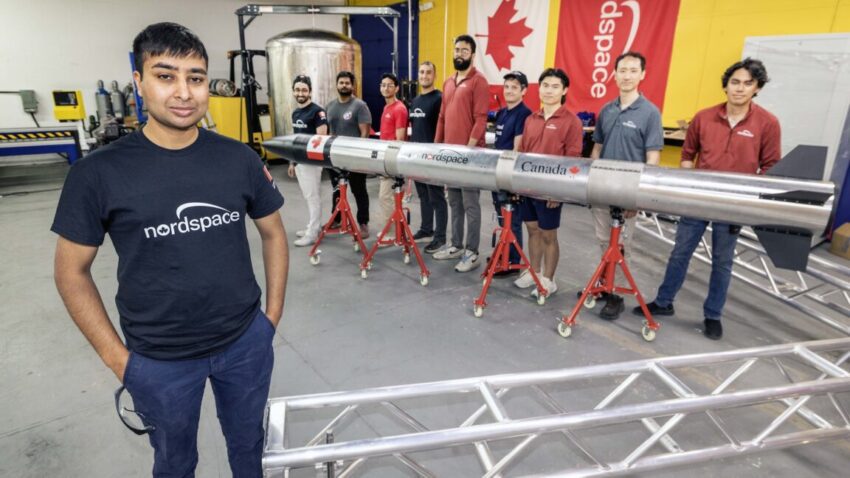
rocket report canada invests in sovereign launch NASA is poised to launch its ESCAPADE mission to Mars aboard Blue Origin’s New Glenn rocket, marking a significant development in the agency’s interplanetary exploration efforts.
rocket report canada invests in sovereign launch
NASA’s ESCAPADE Mission Overview
The ESCAPADE (Escape and Plasma Acceleration and Dynamics Explorers) mission aims to study Mars’ atmosphere and its interaction with solar wind. The mission is designed to provide valuable insights into the Martian environment, which is crucial for understanding the planet’s climate history and potential for future human exploration. NASA has selected Blue Origin’s New Glenn rocket for this mission, a decision that reflects both the potential cost savings and the inherent risks associated with using a relatively new launch vehicle.
Cost Considerations
One of the most compelling aspects of this arrangement is the cost. Blue Origin is charging NASA approximately $20 million for the launch, a price that is significantly lower than what other launch providers typically charge for similar missions. For context, SpaceX and United Launch Alliance (ULA) often command higher fees for their services, especially for missions with strict launch windows. By opting for Blue Origin, NASA is attempting to balance budget constraints with the need for timely launches.
Trade-offs and Risks
However, the decision to go with Blue Origin is not without its drawbacks. The New Glenn rocket is still in its early stages, having completed only one flight prior to the ESCAPADE mission. This raises questions about reliability and safety. The rocket has not yet received certification from NASA or the U.S. Space Force, which could pose a risk to the mission. In the realm of space exploration, where the stakes are incredibly high, the reliability of the launch vehicle is paramount.
Moreover, the launch schedule for ESCAPADE has been subject to delays, primarily due to developmental challenges faced by Blue Origin. NASA’s interplanetary missions typically operate within fixed launch windows, which are determined by orbital mechanics and the relative positions of Earth and Mars. Delays in launching can have cascading effects on mission objectives, potentially jeopardizing the scientific goals of the mission.
Launch Timeline and Trajectory
As of now, Blue Origin has set a launch date for ESCAPADE on Sunday, November 9. This date is critical as it falls outside the conventional interplanetary launch window, which typically occurs every 26 months when Earth and Mars are optimally aligned. To accommodate this, mission planners have devised a unique trajectory that will allow the satellites to reach Mars by 2027. This innovative approach demonstrates the flexibility and ingenuity of the team involved in the mission, but it also underscores the complexities of interplanetary travel.
Technical Challenges
The development of the New Glenn rocket has not been without its challenges. Blue Origin has faced various technical hurdles that have led to delays in the rocket’s readiness. These issues range from propulsion system development to integration of payload systems. Each of these challenges requires meticulous attention to detail and rigorous testing to ensure the rocket can perform as expected during the mission.
The New Glenn rocket is designed to be a heavy-lift vehicle, capable of carrying a variety of payloads into orbit and beyond. Its success is crucial for Blue Origin’s long-term strategy, which includes not only government contracts but also commercial launches. The company aims to establish itself as a key player in the growing space launch market, which is becoming increasingly competitive.
Broader Implications for Space Exploration
The choice of Blue Origin for the ESCAPADE mission reflects broader trends in the space industry, where government agencies are increasingly turning to commercial providers for launch services. This shift is driven by a combination of factors, including cost, innovation, and the desire to foster a competitive marketplace. By engaging with private companies, NASA can leverage new technologies and approaches that may not be available through traditional government contractors.
Stakeholder Reactions
The decision to partner with Blue Origin has elicited a range of reactions from stakeholders in the space community. Supporters argue that this collaboration represents a forward-thinking approach to space exploration, allowing NASA to benefit from the agility and innovation of the private sector. Critics, however, express concerns about the risks associated with using a less proven launch vehicle for critical missions. They emphasize the importance of reliability and the potential consequences of delays or failures.
Future of Blue Origin and New Glenn
Looking ahead, the success of the ESCAPADE mission could have significant implications for Blue Origin’s future. A successful launch would not only validate the New Glenn rocket but also enhance the company’s reputation as a reliable launch provider. This could open the door for additional contracts with NASA and other government agencies, as well as commercial clients looking for launch services.
Blue Origin’s long-term vision includes a range of ambitious projects, from lunar landers to orbital habitats. The New Glenn rocket is a cornerstone of this vision, and its performance during the ESCAPADE mission will be closely scrutinized. A successful mission could bolster investor confidence and attract further funding for future projects.
Conclusion
The upcoming launch of NASA’s ESCAPADE mission aboard Blue Origin’s New Glenn rocket represents a pivotal moment in the agency’s ongoing efforts to explore Mars. While the cost savings are appealing, the associated risks and uncertainties cannot be overlooked. As the launch date approaches, all eyes will be on Blue Origin to see if they can deliver on their promises and successfully execute this mission. The outcome will not only impact NASA’s objectives but also shape the future of commercial spaceflight and the role of private companies in government-led space exploration.
Source: Original report
Was this helpful?
Last Modified: November 8, 2025 at 12:37 am
2 views















